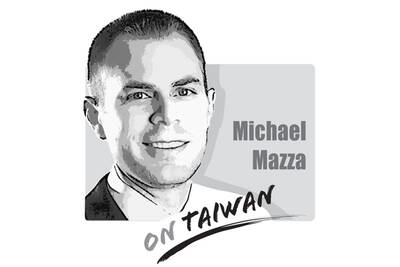The 65th anniversary of the 823 Artillery Bombardment of Kinmen County took place on Wednesday, commemorating the Aug. 23, 1958, date, which marked the beginning of the Second Taiwan Strait Crisis. While the battle signifies protection of Taiwan’s security, it would be more accurate to say that it was a continuation of the civil war between the Chinese Nationalist Party (KMT) and the Chinese Communist Party (CCP). If the KMT government had not brought the Republic of China (ROC) to Taiwan following the end of World War II, it is possible that, after some time under US occupation, Taiwan would have become an independent country.
When the ROC and its government were established, the territory of Taiwan was ruled by Japan, not the ROC. This fact proves that the CCP’s claim that “Taiwan is an inseparable part of Chinese territory” is a fabricated justification for invading Taiwan.
It was because of Taiwan’s existence that the US government responded to the 823 Artillery Bombardment by dispatching the US Navy’s Seventh Fleet to help the ROC government defend the islands of Kinmen and Matsu. This prolonged the legal status of the ROC, as unlike Taiwan, Kinmen and Matsu were within the ROC’s territory at the time of its foundation.
The ROC is a special country. In legal terms, Taiwan, which came under US military occupation following Japan’s defeat in World War II, was entrusted to be managed by the ROC government.
However, Taiwan has developed the features and status of a nation state, having all the requisite elements of population, land, government and sovereignty. The only problem is that the continued application of the ROC Constitution does not closely suit the real situation. As this is the case, there is no need for independence, but what is needed is an overhaul of its national institutions.
In commemorating the 823 Artillery Bombardment, there is no need to state once again that it was the reason behind Taiwan’s security, and it is redundant to repeat discussions about what differences might exist between the ROC’s effective governance of Taiwan in comparison to Kinmen and Matsu. This is because Taiwan, Penghu, Kinmen and Matsu have become a community of common destiny.
Since they are all governed by the free and democratic ROC, they should unite as one to resist any aggression against our nation by the despotic CCP regime.
Chen Chi-nung is a political commentator.
Translated by Julian Clegg

Taiwan has lost Trump. Or so a former State Department official and lobbyist would have us believe. Writing for online outlet Domino Theory in an article titled “How Taiwan lost Trump,” Christian Whiton provides a litany of reasons that the William Lai (賴清德) and Donald Trump administrations have supposedly fallen out — and it’s all Lai’s fault. Although many of Whiton’s claims are misleading or ill-informed, the article is helpfully, if unintentionally, revealing of a key aspect of the MAGA worldview. Whiton complains of the ruling Democratic Progressive Party’s “inability to understand and relate to the New Right in America.” Many
US lobbyist Christian Whiton has published an update to his article, “How Taiwan Lost Trump,” discussed on the editorial page on Sunday. His new article, titled “What Taiwan Should Do” refers to the three articles published in the Taipei Times, saying that none had offered a solution to the problems he identified. That is fair. The articles pushed back on points Whiton made that were felt partisan, misdirected or uninformed; in this response, he offers solutions of his own. While many are on point and he would find no disagreement here, the nuances of the political and historical complexities in
Taiwan is to hold a referendum on Saturday next week to decide whether the Ma-anshan Nuclear Power Plant, which was shut down in May after 40 years of service, should restart operations for as long as another 20 years. The referendum was proposed by the opposition Taiwan People’s Party (TPP) and passed in the legislature with support from the opposition Chinese Nationalist Party (KMT). Its question reads: “Do you agree that the Ma-anshan Nuclear Power Plant should continue operations upon approval by the competent authority and confirmation that there are no safety concerns?” Supporters of the proposal argue that nuclear power
The Centers for Disease Control and Prevention (CDC) earlier this month raised its travel alert for China’s Guangdong Province to Level 2 “Alert,” advising travelers to take enhanced precautions amid a chikungunya outbreak in the region. More than 8,000 cases have been reported in the province since June. Chikungunya is caused by the chikungunya virus and transmitted to humans through bites from infected mosquitoes, most commonly Aedes aegypti and Aedes albopictus. These species thrive in warm, humid climates and are also major vectors for dengue, Zika and yellow fever. The disease is characterized by high fever and severe, often incapacitating joint pain.